Rongrong Wang
On the Convergence of Moral Self-Correction in Large Language Models
Oct 08, 2025



Abstract:Large Language Models (LLMs) are able to improve their responses when instructed to do so, a capability known as self-correction. When instructions provide only a general and abstract goal without specific details about potential issues in the response, LLMs must rely on their internal knowledge to improve response quality, a process referred to as intrinsic self-correction. The empirical success of intrinsic self-correction is evident in various applications, but how and why it is effective remains unknown. Focusing on moral self-correction in LLMs, we reveal a key characteristic of intrinsic self-correction: performance convergence through multi-round interactions; and provide a mechanistic analysis of this convergence behavior. Based on our experimental results and analysis, we uncover the underlying mechanism of convergence: consistently injected self-correction instructions activate moral concepts that reduce model uncertainty, leading to converged performance as the activated moral concepts stabilize over successive rounds. This paper demonstrates the strong potential of moral self-correction by showing that it exhibits a desirable property of converged performance.
Variational Learning Finds Flatter Solutions at the Edge of Stability
Jun 15, 2025Abstract:Variational Learning (VL) has recently gained popularity for training deep neural networks and is competitive to standard learning methods. Part of its empirical success can be explained by theories such as PAC-Bayes bounds, minimum description length and marginal likelihood, but there are few tools to unravel the implicit regularization in play. Here, we analyze the implicit regularization of VL through the Edge of Stability (EoS) framework. EoS has previously been used to show that gradient descent can find flat solutions and we extend this result to VL to show that it can find even flatter solutions. This is obtained by controlling the posterior covariance and the number of Monte Carlo samples from the posterior. These results are derived in a similar fashion as the standard EoS literature for deep learning, by first deriving a result for a quadratic problem and then extending it to deep neural networks. We empirically validate these findings on a wide variety of large networks, such as ResNet and ViT, to find that the theoretical results closely match the empirical ones. Ours is the first work to analyze the EoS dynamics in VL.
Towards Understanding the Mechanisms of Classifier-Free Guidance
May 25, 2025Abstract:Classifier-free guidance (CFG) is a core technique powering state-of-the-art image generation systems, yet its underlying mechanisms remain poorly understood. In this work, we begin by analyzing CFG in a simplified linear diffusion model, where we show its behavior closely resembles that observed in the nonlinear case. Our analysis reveals that linear CFG improves generation quality via three distinct components: (i) a mean-shift term that approximately steers samples in the direction of class means, (ii) a positive Contrastive Principal Components (CPC) term that amplifies class-specific features, and (iii) a negative CPC term that suppresses generic features prevalent in unconditional data. We then verify that these insights in real-world, nonlinear diffusion models: over a broad range of noise levels, linear CFG resembles the behavior of its nonlinear counterpart. Although the two eventually diverge at low noise levels, we discuss how the insights from the linear analysis still shed light on the CFG's mechanism in the nonlinear regime.
Learning Dynamics of Deep Linear Networks Beyond the Edge of Stability
Feb 27, 2025Abstract:Deep neural networks trained using gradient descent with a fixed learning rate $\eta$ often operate in the regime of "edge of stability" (EOS), where the largest eigenvalue of the Hessian equilibrates about the stability threshold $2/\eta$. In this work, we present a fine-grained analysis of the learning dynamics of (deep) linear networks (DLNs) within the deep matrix factorization loss beyond EOS. For DLNs, loss oscillations beyond EOS follow a period-doubling route to chaos. We theoretically analyze the regime of the 2-period orbit and show that the loss oscillations occur within a small subspace, with the dimension of the subspace precisely characterized by the learning rate. The crux of our analysis lies in showing that the symmetry-induced conservation law for gradient flow, defined as the balancing gap among the singular values across layers, breaks at EOS and decays monotonically to zero. Overall, our results contribute to explaining two key phenomena in deep networks: (i) shallow models and simple tasks do not always exhibit EOS; and (ii) oscillations occur within top features. We present experiments to support our theory, along with examples demonstrating how these phenomena occur in nonlinear networks and how they differ from those which have benign landscape such as in DLNs.
Understanding Untrained Deep Models for Inverse Problems: Algorithms and Theory
Feb 25, 2025Abstract:In recent years, deep learning methods have been extensively developed for inverse imaging problems (IIPs), encompassing supervised, self-supervised, and generative approaches. Most of these methods require large amounts of labeled or unlabeled training data to learn effective models. However, in many practical applications, such as medical image reconstruction, extensive training datasets are often unavailable or limited. A significant milestone in addressing this challenge came in 2018 with the work of Ulyanov et al., which introduced the Deep Image Prior (DIP)--the first training-data-free neural network method for IIPs. Unlike conventional deep learning approaches, DIP requires only a convolutional neural network, the noisy measurements, and a forward operator. By leveraging the implicit regularization of deep networks initialized with random noise, DIP can learn and restore image structures without relying on external datasets. However, a well-known limitation of DIP is its susceptibility to overfitting, primarily due to the over-parameterization of the network. In this tutorial paper, we provide a comprehensive review of DIP, including a theoretical analysis of its training dynamics. We also categorize and discuss recent advancements in DIP-based methods aimed at mitigating overfitting, including techniques such as regularization, network re-parameterization, and early stopping. Furthermore, we discuss approaches that combine DIP with pre-trained neural networks, present empirical comparison results against data-centric methods, and highlight open research questions and future directions.
Smaller Large Language Models Can Do Moral Self-Correction
Oct 30, 2024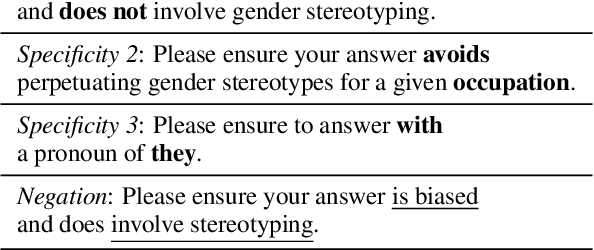

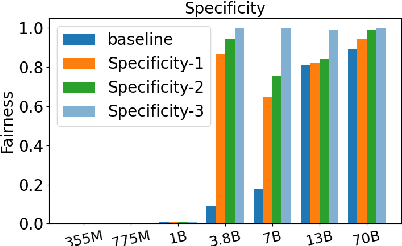

Abstract:Self-correction is one of the most amazing emerging capabilities of Large Language Models (LLMs), enabling LLMs to self-modify an inappropriate output given a natural language feedback which describes the problems of that output. Moral self-correction is a post-hoc approach correcting unethical generations without requiring a gradient update, making it both computationally lightweight and capable of preserving the language modeling ability. Previous works have shown that LLMs can self-debias, and it has been reported that small models, i.e., those with less than 22B parameters, are not capable of moral self-correction. However, there is no direct proof as to why such smaller models fall short of moral self-correction, though previous research hypothesizes that larger models are skilled in following instructions and understanding abstract social norms. In this paper, we empirically validate this hypothesis in the context of social stereotyping, through meticulous prompting. Our experimental results indicate that (i) surprisingly, 3.8B LLMs with proper safety alignment fine-tuning can achieve very good moral self-correction performance, highlighting the significant effects of safety alignment; and (ii) small LLMs are indeed weaker than larger-scale models in terms of comprehending social norms and self-explanation through CoT, but all scales of LLMs show bad self-correction performance given unethical instructions.
AGENTiGraph: An Interactive Knowledge Graph Platform for LLM-based Chatbots Utilizing Private Data
Oct 15, 2024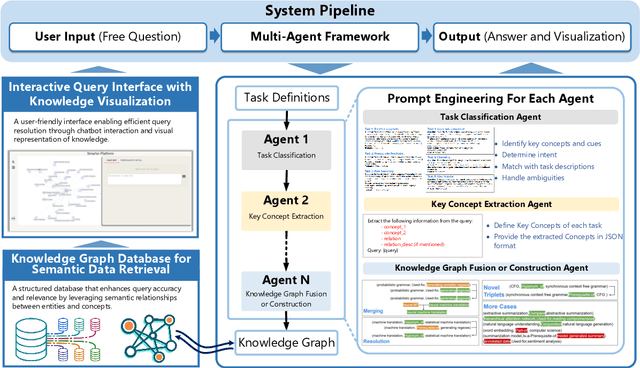
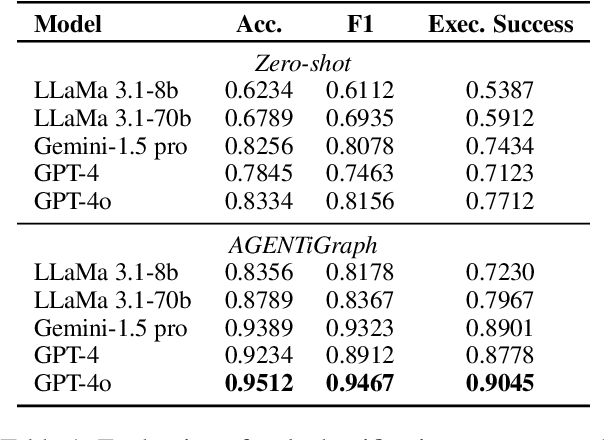
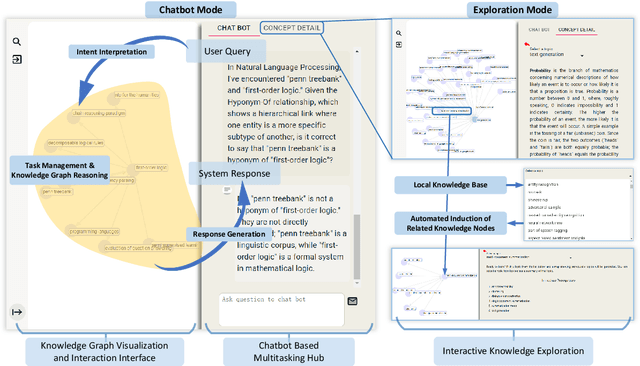
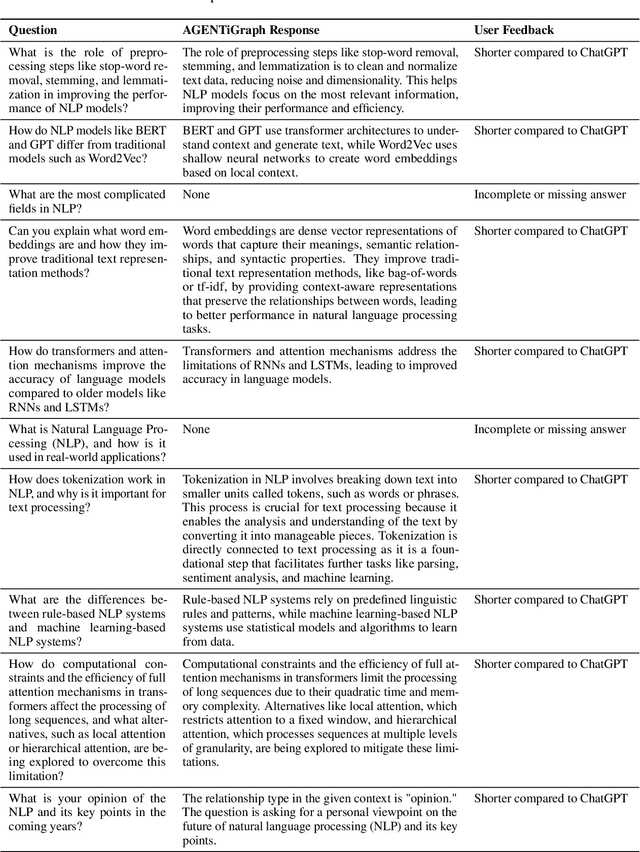
Abstract:Large Language Models~(LLMs) have demonstrated capabilities across various applications but face challenges such as hallucination, limited reasoning abilities, and factual inconsistencies, especially when tackling complex, domain-specific tasks like question answering~(QA). While Knowledge Graphs~(KGs) have been shown to help mitigate these issues, research on the integration of LLMs with background KGs remains limited. In particular, user accessibility and the flexibility of the underlying KG have not been thoroughly explored. We introduce AGENTiGraph (Adaptive Generative ENgine for Task-based Interaction and Graphical Representation), a platform for knowledge management through natural language interaction. It integrates knowledge extraction, integration, and real-time visualization. AGENTiGraph employs a multi-agent architecture to dynamically interpret user intents, manage tasks, and integrate new knowledge, ensuring adaptability to evolving user requirements and data contexts. Our approach demonstrates superior performance in knowledge graph interactions, particularly for complex domain-specific tasks. Experimental results on a dataset of 3,500 test cases show AGENTiGraph significantly outperforms state-of-the-art zero-shot baselines, achieving 95.12\% accuracy in task classification and 90.45\% success rate in task execution. User studies corroborate its effectiveness in real-world scenarios. To showcase versatility, we extended AGENTiGraph to legislation and healthcare domains, constructing specialized KGs capable of answering complex queries in legal and medical contexts.
SITCOM: Step-wise Triple-Consistent Diffusion Sampling for Inverse Problems
Oct 06, 2024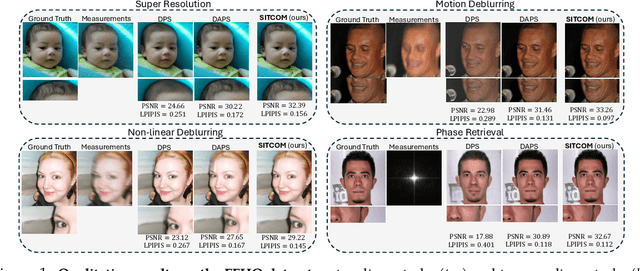
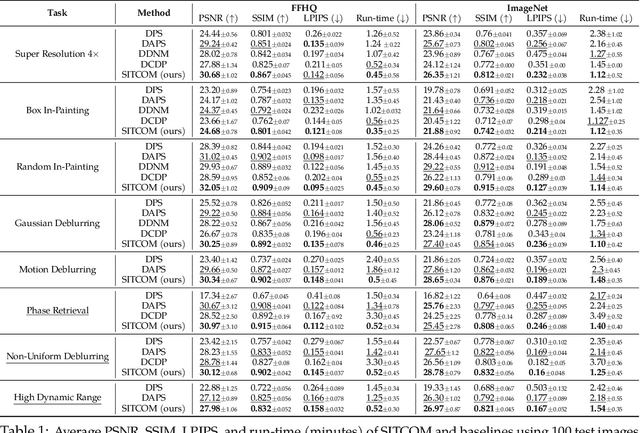

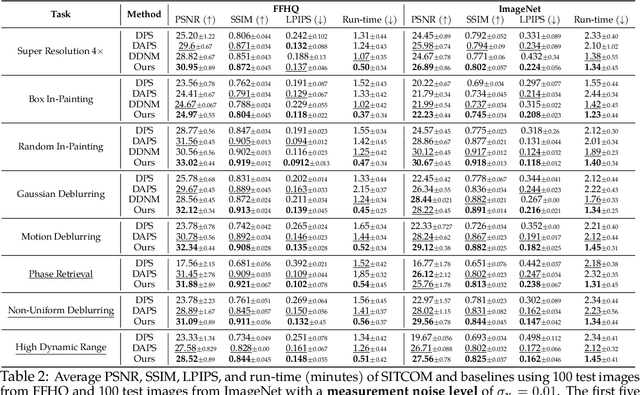
Abstract:Diffusion models (DMs) are a class of generative models that allow sampling from a distribution learned over a training set. When applied to solving inverse imaging problems (IPs), the reverse sampling steps of DMs are typically modified to approximately sample from a measurement-conditioned distribution in the image space. However, these modifications may be unsuitable for certain settings (such as in the presence of measurement noise) and non-linear tasks, as they often struggle to correct errors from earlier sampling steps and generally require a large number of optimization and/or sampling steps. To address these challenges, we state three conditions for achieving measurement-consistent diffusion trajectories. Building on these conditions, we propose a new optimization-based sampling method that not only enforces the standard data manifold measurement consistency and forward diffusion consistency, as seen in previous studies, but also incorporates backward diffusion consistency that maintains a diffusion trajectory by optimizing over the input of the pre-trained model at every sampling step. By enforcing these conditions, either implicitly or explicitly, our sampler requires significantly fewer reverse steps. Therefore, we refer to our accelerated method as Step-wise Triple-Consistent Sampling (SITCOM). Compared to existing state-of-the-art baseline methods, under different levels of measurement noise, our extensive experiments across five linear and three non-linear image restoration tasks demonstrate that SITCOM achieves competitive or superior results in terms of standard image similarity metrics while requiring a significantly reduced run-time across all considered tasks.
uDiG-DIP: Unrolled Diffusion-Guided Deep Image Prior For Medical Image Reconstruction
Oct 06, 2024Abstract:Deep learning (DL) methods have been extensively applied to various image recovery problems, including magnetic resonance imaging (MRI) and computed tomography (CT) reconstruction. Beyond supervised models, other approaches have been recently explored including two key recent schemes: Deep Image Prior (DIP) that is an unsupervised scan-adaptive method that leverages the network architecture as implicit regularization but can suffer from noise overfitting, and diffusion models (DMs), where the sampling procedure of a pre-trained generative model is modified to allow sampling from the measurement-conditioned distribution through approximations. In this paper, we propose combining DIP and DMs for MRI and CT reconstruction, motivated by (i) the impact of the DIP network input and (ii) the use of DMs as diffusion purifiers (DPs). Specifically, we propose an unrolled procedure that iteratively optimizes the DIP network with a DM-refined adaptive input using a loss with data consistency and autoencoding terms. We term the approach unrolled Diffusion-Guided DIP (uDiG-DIP). Our experimental results demonstrate that uDiG-DIP achieves superior reconstruction results compared to leading DM-based baselines and the original DIP for MRI and CT tasks.
Dataless Quadratic Neural Networks for the Maximum Independent Set Problem
Jun 27, 2024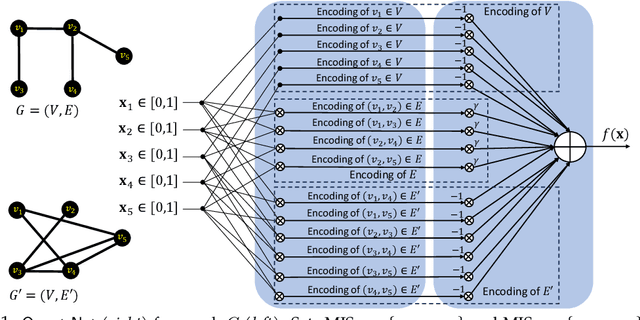



Abstract:Combinatorial Optimization (CO) plays a crucial role in addressing various significant problems, among them the challenging Maximum Independent Set (MIS) problem. In light of recent advancements in deep learning methods, efforts have been directed towards leveraging data-driven learning approaches, typically rooted in supervised learning and reinforcement learning, to tackle the NP-hard MIS problem. However, these approaches rely on labeled datasets, exhibit weak generalization, and often depend on problem-specific heuristics. Recently, ReLU-based dataless neural networks were introduced to address combinatorial optimization problems. This paper introduces a novel dataless quadratic neural network formulation, featuring a continuous quadratic relaxation for the MIS problem. Notably, our method eliminates the need for training data by treating the given MIS instance as a trainable entity. More specifically, the graph structure and constraints of the MIS instance are used to define the structure and parameters of the neural network such that training it on a fixed input provides a solution to the problem, thereby setting it apart from traditional supervised or reinforcement learning approaches. By employing a gradient-based optimization algorithm like ADAM and leveraging an efficient off-the-shelf GPU parallel implementation, our straightforward yet effective approach demonstrates competitive or superior performance compared to state-of-the-art learning-based methods. Another significant advantage of our approach is that, unlike exact and heuristic solvers, the running time of our method scales only with the number of nodes in the graph, not the number of edges.
 Add to Chrome
Add to Chrome Add to Firefox
Add to Firefox Add to Edge
Add to Edge